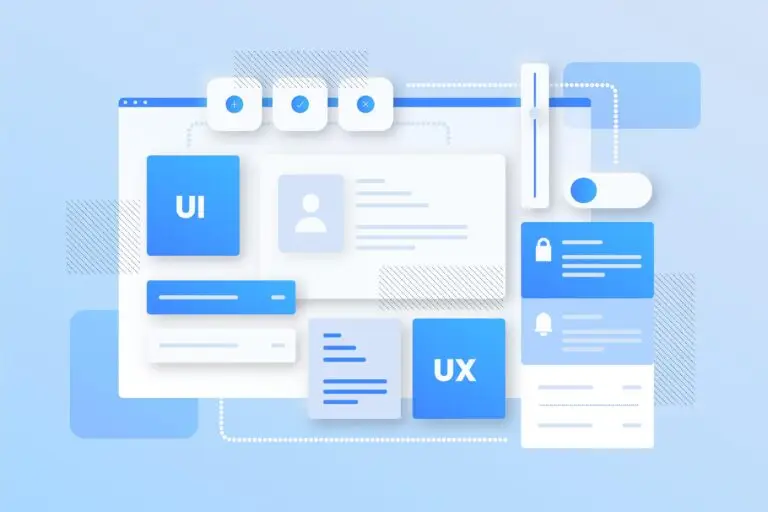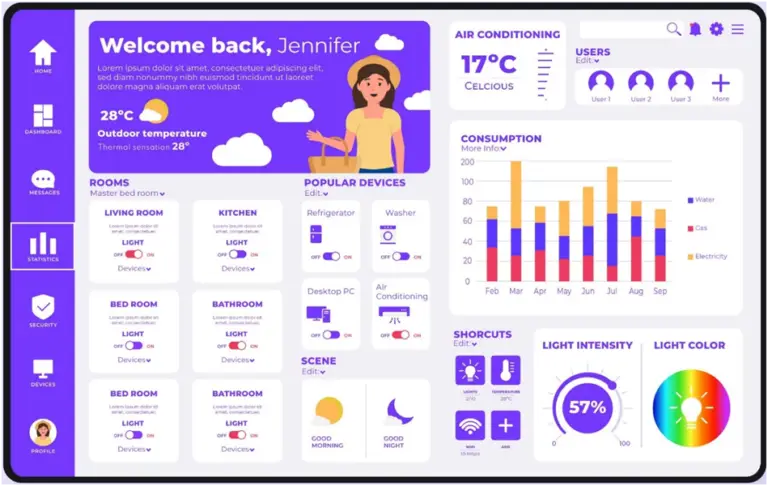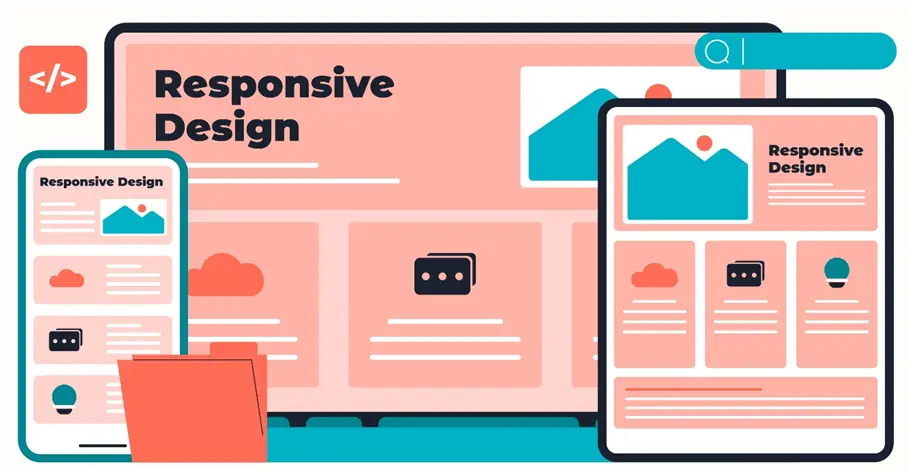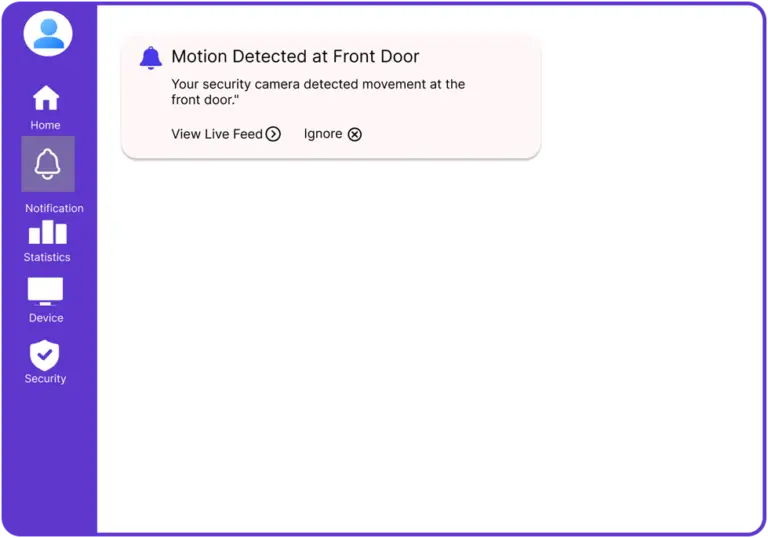Essential UI Design Principles for IoT Websites


As the Internet of Things (IoT) rapidly expands across industries, creating intuitive and user-friendly websites for managing connected devices has become increasingly important. Unlike traditional websites, IoT sites must facilitate complex interactions between users and devices. Below are key UI design principles to help developers build efficient, adaptable, and user-centric IoT websites.
1. Prioritize User-Centered Design:-
IoT websites involve intricate device interactions, making a user-centered approach crucial. The user interface (UI) should be intuitive and tailored to specific user needs.
- Understand the User’s Context: Consider how users interact with the IoT system. Are they remotely monitoring devices or controlling them directly? Design your UI to support these actions seamlessly.
- Simplify Navigation: IoT systems are often complex, so reducing cognitive load is essential. Organize the interface logically, ensuring key tasks are easily accessible to improve usability.
Example: Designing intuitive UI for IoT systems is key to enhancing user experiences. For example, a smart home dashboard should prioritize real-time data like temperature and energy usage, while offering quick access to essential controls like locking doors or managing devices. Simple, functional design makes complex systems easier to navigate.

2. Ensure Real-Time Data Visualization:-
A core function of IoT websites is presenting real-time data from connected devices. The UI should make this information easily accessible and understandable.
- Clear Data Visualizations: Use graphs, charts, and dashboards to represent real-time data in a digestible way, allowing users to quickly interpret device statuses and trends.
- Provide Real-Time Feedback: Ensure the UI provides immediate feedback after user actions (e.g., turning on a smart light), reducing uncertainty and enhancing the experience.
Example: This smart home dashboard provides an overview of key environmental conditions, such as outdoor temperature and air conditioning status. It allows users to control lights and devices in different rooms, like air conditioners and refrigerators. A consumption chart tracks energy use for water, gas, and electricity, adjusts light settings, all within a clean and user-friendly layout.

3. Focus on Responsiveness and Accessibility
IoT websites must be accessible across various devices like smartphones, tablets, and desktops. Ensuring responsive design is key to maintaining functionality in different environments.
- Responsive Design: The UI should adapt seamlessly to different screen sizes and orientations, ensuring a smooth experience whether users are on mobile or desktop.
- Accessibility Compliance: Follow WCAG guidelines by incorporating features like keyboard navigation, screen reader compatibility, and adequate contrast, ensuring inclusivity for all users.

4. Implement Strong Security and Privacy Features
Security is paramount in IoT systems, as they often handle sensitive data. Your UI should feature clear security indicators and give users control over privacy settings.
- Visible Security Indicators: Display SSL/TLS encryption or lock icons to signal a secure connection, which is crucial when users manage devices remotely.
- Privacy Controls: Allow easy access to privacy settings, like data-sharing permissions. Transparency about data usage builds trust and enhances the user experience.
Example: In a smart home dashboard, a lock icon is displayed prominently to indicate that the connection is SSL/TLS encrypted, ensuring secure device management. Users can easily access privacy settings through a dedicated menu, where they can adjust data-sharing permissions or opt out of certain services. By offering transparency in how data is used and providing clear security indicators, the system builds user trust while safeguarding sensitive information.

5. Simplify Complex Interactions
Managing multiple devices and workflows can overwhelm users. Simplify these interactions to make them as intuitive as possible.
- Organized Device Management: Group devices logically, allowing users to control them individually or in clusters. For example, provide an option to adjust all smart lights at once or individually.
- Automate Repetitive Tasks: Introduce automation features such as creating schedules or triggers (e.g., turning off all devices when the user leaves home).
6. Support for Notifications and Alerts
IoT systems often rely on alerts and notifications to keep users informed about key events, like device malfunctions. Your UI should handle these efficiently.
- Clear and Actionable Alerts: Notifications should be concise and offer actionable options. For instance, if a device detects an issue, allow the user to resolve it directly from the notification.
- Customizable Notifications: Let users customize the type and delivery method of notifications (e.g., via email, SMS, or push), avoiding overload while enhancing the user experience.
Example: In a smart home dashboard, if a security camera detects unusual activity, a push notification instantly alerts the user with a brief message like, “Motion detected at the front door.” The alert provides two actionable options: View Live Feed or Ignore. This keeps users informed and allows them to act immediately.

7. Optimize for Performance and Reliability
Given that IoT websites handle real-time data and device control, performance and reliability are crucial for maintaining a smooth user experience.
- Efficient Data Handling: Optimize the UI to process real-time data efficiently without slowdowns. Utilize techniques like asynchronous data loading and caching to minimize server load and latency.
- Graceful Connectivity Management: Design the UI to handle connectivity issues smoothly. If a device goes offline, the UI should clearly indicate it and provide troubleshooting steps.
Conclusion
Designing an effective UI for IoT websites demands careful attention to user needs, real-time data visualization, security, and scalability. By focusing on user-centered design, simplifying interactions, and optimizing for performance, developers can create UIs that meet the unique demands of IoT systems while offering a seamless, enjoyable user experience. As IoT technology evolves, ensuring adaptability and future-proofing will be key to long-term success. At IOSCAPE, we are committed to delivering innovative solutions that address these challenges and anticipate future developments in the IoT landscape.
Follow Us
Lorem ipsum dolor sit amet, consectetur adipiscing elit. Ut elit tellus, luctus nec ullamcorper mattis, pulvinar dapibus leo.